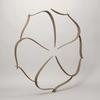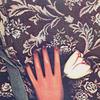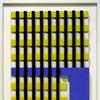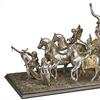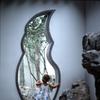Turn the Page: The First Ten Years of Hi-Fructose
- SACRAMENTO, California
- /
- May 31, 2017
This June, the Crocker Art Museum will bring to Sacramento Turn the Page: The First Ten Years of Hi-Fructose, a one-of- a-kind exhibition of works by artists who have been prominently featured in the best-selling contemporary art magazine Hi-Fructose. This exhibition marks the tenth anniversary of the influential magazine by bringing together some of the most remarkable artists to grace its pages – artists whose works may not otherwise be exhibited together.
In 2005, husband-and- wife artists Daniel “Attaboy” Seifert and Annie Owens set out to increase the public’s access to the works of many emerging, underground, and “lowbrow” artists they enjoyed, and founded the pioneering magazine Hi-Fructose. Through their print and digital publications and platforms, Hi-Fructose has become an important and divergent voice for contemporary artists who work in a variety of mediums, highlighting works that demonstrate a mastery of technical skill in ways that are unique, meaningful. Through their inclusive approach, the editors have consistently employed a democratic outlook that allows pop surrealist, street, figurative, narrative, and many other styles to seamlessly converge.
This summer, the Crocker Art Museum will show works by 51 of the foremost “New Contemporary” artists to be featured in Hi-Fructose. With pieces ranging from oil paintings and drawings, to porcelain, bronze sculptures, video works, and installations, Turn the Page forms a remarkable assembly of artists who have challenged traditional notions of art to inform and break new ground. According to the Museum’s Assistant Curator Christie Hajela, the artists featured in the exhibition have acquired followers and become successful through “non-traditional” means, such as Hi-Fructose magazine and social media platforms, rather than through traditional channels like museums and galleries.
“Bringing these works to a museum setting reinforces the artists’ contributions, and the contributions of Hi-Fructose magazine, to the broader dialogue of contemporary art,” says Hajela. “The exhibition presents these artists not just as products of an ‘alternative’ or ‘underground’ scene, but as considerably underrepresented yet equally relevant.”
Among the artists to be featured at the Crocker are Beth Cavener, Mark Ryden, Olek, Tara McPherson, and Mark Dean Veca, the latter creating an interactive, immersive installation. Visitors will likely recognize the work of street artist Shepard Fairey, who is known for his graphic, stenciled works including his “Obey Giant” propaganda and iconic Barack Obama “Hope” poster. Also on view is a heroic, old-master- style portrait of a contemporary African American man by Kehinde Wiley, whose retrospective, which is currently touring the nation, has garnered widespread acclaim. Some featured artists, including Kris Kuksi and Tracey Snelling, are already represented in the Crocker’s permanent collection.
“Although viewers may recognize the names of the artists in this exhibition, many have only seen their works as two-dimensional images in magazines or online,” says Hajela. “Turn the Page creates the opportunity for viewers to ‘walk’ through the pages of Hi-Fructose, and brings an array of exquisitely crafted artworks to the Crocker for an interactive and engaging experience.”
Turn the Page: The First Ten Years of Hi-Fructose will be on view at the Crocker Art Museum from June 11 through September 17, 2017. This exhibition is organized by the Virginia Museum of Contemporary Art (MOCA). Generous funding is provided by the City of Virginia Beach, the National Endowment for the Arts, and the Virginia Tourism Corporation, as well as other MOCA supporters. The exhibition is sponsored locally by US Bank.



